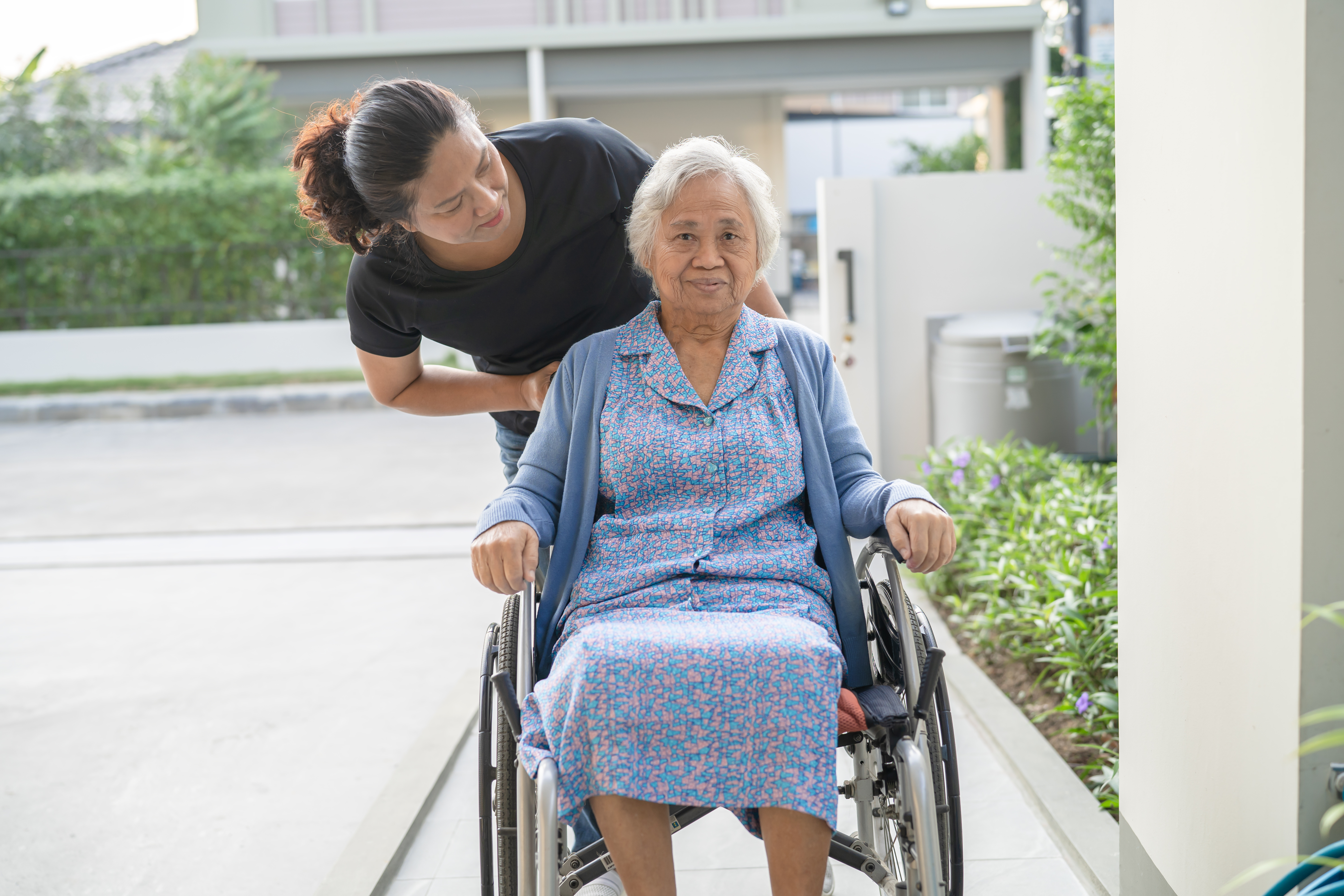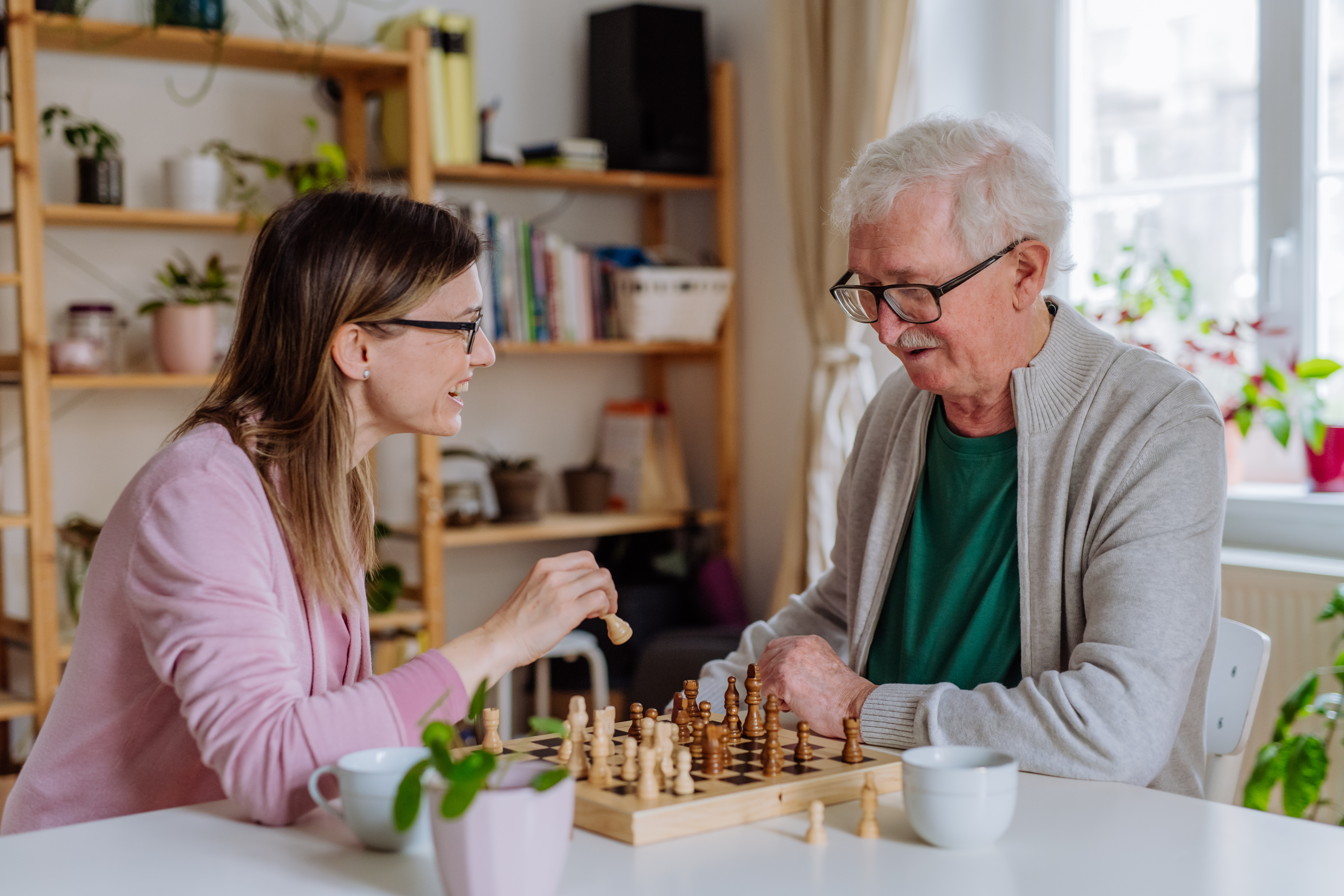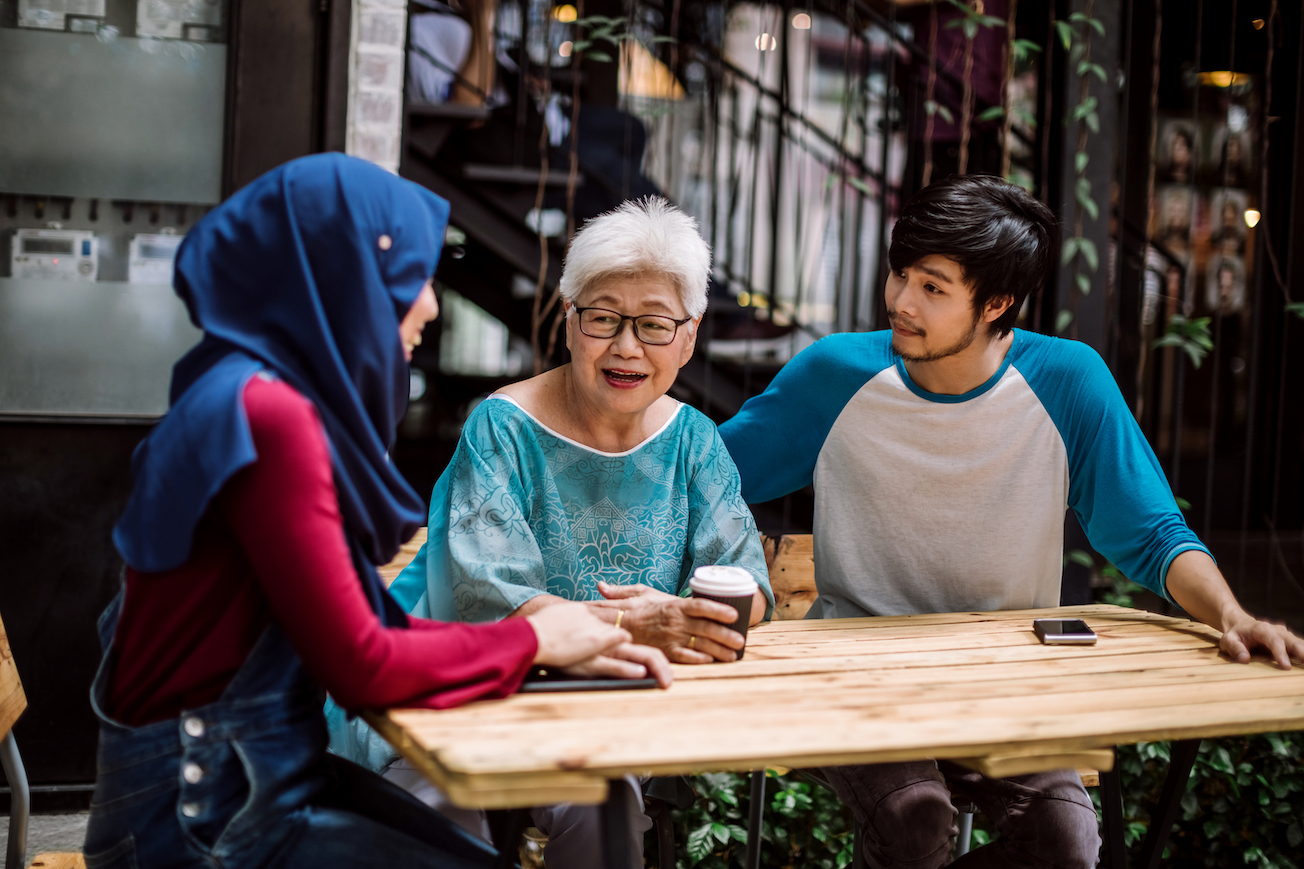Home modifications to make after a stroke

Making a few smart home modifications after a stroke can go a long way in creating a safer, more supportive space for your loved one. Whether it’s reducing fall risks, making it easier to move around, or simply supporting daily routines, these changes help bring comfort and independence back into the home. Even small updates such as installing grab bars, adding non-slip flooring, or improving lighting can make a big difference in safety, confidence, and overall quality of life.
Coming home after a stroke is a major milestone, but it often comes with new challenges. As your loved one’s needs change, the home environment may require adjustments to ensure it continues to meet their needs.
The good news is that with some thoughtful updates, home can once again become a place of comfort, safety, and independence. Simple changes such as reducing fall risks and improving accessibility can go a long way in supporting your loved one’s well-being and daily routines.
We’ll help you navigate practical, person-centered home modifications for stroke recovery, ensuring you can create a space that promotes dignity, comfort, and independence for your loved one.
Why home modifications matter after a stroke
Every stroke survivor has unique needs, but most will benefit from a living space that reduces risks, supports mobility, and fosters a sense of independence. Home modifications play a key role in helping your loved one navigate everyday life and help you care for them at home.
Preventing falls
One of the most important reasons to modify the home after a stroke is to reduce the risk of falls. Stroke recovery can affect balance, strength, and coordination, making everyday movements challenging and sometimes dangerous.1
Fortunately, a few smart updates can help create a much safer environment. Here are some practical fall-prevention modifications to consider:
Clear, wide walking paths – Remove clutter, loose rugs, or furniture that could block or narrow pathways.
Sturdy handrails – Install rails along hallways and staircases to provide steady support.
Non-slip flooring – Add non-slip mats or flooring in areas such as the kitchen and bathroom.
Grab bars – Place grab bars in high-risk areas such as the shower, bathtub, and near the toilet.
Shower chairs and raised toilet seats – These additions offer extra stability and comfort.
Improved lighting – Use brighter bulbs or motion-activated lights to increase visibility throughout the home.
Whether you're choosing a toilet seat, enhancing shower safety, or clearing walking paths, making the right modifications can help your loved one feel more at home. When your loved one feels more secure in their space, they can move with greater confidence and focus on healing.
Improving mobility
Stroke patients often experience mobility challenges. For some, even a few steps can feel overwhelming. Modifying entrances, hallways, and frequently used rooms can make the home more accessible in the face of new abilities, so they can adjust to activities of daily living after their stroke.
Wider doorways, ramp access, and adjustable-height furniture can help accommodate walkers, wheelchairs, or other assistive devices. Small changes such as rearranging furniture and reducing clutter also support smoother movement and easier navigation.
Maintaining independence
Empower your loved one to live on their terms with thoughtful home updates that support both independence and wellbeing. When the home is set up to support their capabilities, even small daily tasks can become opportunities for boosting confidence and connection.
Simple updates and tools can empower your loved one to do more on their own, such as:
Lever-style door handles that are easier to open with limited grip strength.
Easy-to-reach storage in the kitchen, bathroom, and bedroom.
Adjustable-height furniture that supports safe sitting and standing.
Touch lamps or rocker light switches for easier lighting control.
These modifications allow your loved one to dress themselves, prepare a snack, or relax in their favorite spot with less frustration and more joy. And as their confidence grows, so does their motivation to stay engaged in their recovery journey.
Ask for a home safety evaluation
If your loved one is receiving support from an in-home physical therapist or occupational therapist after their stroke, ask the therapist to complete a full home safety evaluation.
This evaluation provides personalized recommendations for equipment or adaptations to support your loved one during their recovery.
Entryway adjustments for accessibility
Begin your adjustments with one of the most important spaces in the home: the entryway. Ensuring that your loved one can enter and exit the home safely and comfortably will improve their mobility and help them feel free and connected to the outside world.
Here are some key entryway adjustments to consider:
Ramp installation – If you have stairs, consider adding a ramp with a gentle incline. Make sure it includes handrails on both sides, a non-slip surface to prevent falls, and complies with local and state regulations.
Widened doorways – Standard doorways may not accommodate walkers or wheelchairs. Widening the front door (and interior doors) can facilitate smoother movement throughout the home.
Threshold modifications – Raised thresholds can pose a tripping hazard. Replacing them with low-profile or beveled thresholds minimizes obstacles.
Automatic door openers – These can be especially helpful if your loved one has limited strength or uses a wheelchair.
Proper lighting – Install motion-sensor lights or brighter outdoor lighting to make the entryway safer during early mornings or evenings.
Secure railings and steps – If a ramp isn’t an option, ensure stairs have sturdy, easy-to-grip railings on both sides.
Even small adjustments can help reduce risks and support your loved one’s independence.
Bathroom safety modifications
The bathroom, in particular, can present challenges. Slippery surfaces, tight spaces, and limited mobility can turn simple routines into risky obstacles. You might find yourself worrying about falls or struggling to help your loved one with basic tasks.
The good news is, by making adjustments tailored to your loved one’s needs, you’ll help them feel more comfortable and secure in their daily routines.
Supportive fixtures
Installing sturdy grab bars near the toilet, in the shower, and beside the bathtub gives them something to hold onto when sitting, standing, or moving. Choose bars that are securely mounted and easy to grip.
Safer showering and bathing
A walk-in shower or low-threshold bathtub can reduce the risk of tripping, while a shower chair or bath bench offers a secure place to sit while bathing.
Pair these modifications with a handheld showerhead for more flexibility and ease. Additionally, non-slip mats or textured tile flooring inside and outside the shower add extra traction.
Accessible toilet solutions
Consider installing a raised toilet seat or replacing the existing toilet with a comfort-height model for better bathroom assistance. These adjustments make it easier to sit down and stand up, especially if your loved one is still rebuilding their strength or balance.
Lighting and organization
Bright, glare-free lighting helps improve visibility in all areas of the bathroom. Clear away clutter and organize toiletries in easy-to-reach baskets or drawers to reduce unnecessary movement and strain.
Kitchen safety and accessibility
The kitchen is often the heart of the home. For someone recovering from a stroke, it can also be a place of renewed confidence. By making a few purposeful changes, you can help your loved one safely navigate this space, participate in meal preparations, and enjoy daily routines with greater ease to support their emotional support after a stroke.
Simplify movement
Start by creating clear walking paths between the sink, stove, and refrigerator. Removing rugs, securing cords, and rearranging furniture can reduce the risk of tripping or slipping.2 Consider using non-slip mats in front of high-use areas such as the the sink and stove.
Make tools easy to reach
Reorganize the kitchen to keep frequently used items at waist or counter height, reducing the need to bend, stretch, or climb.
Pull-out shelves, lazy Susans, and drawer organizers can help your loved one find and grab utensils and ingredients. Using easy-grip tools, lightweight cookware, and electric can openers can also make kitchen tasks more manageable.
Improve visibility and lighting
Lighting plays a huge role in keeping your loved one safe especially at home. Install under-cabinet lights to brighten countertops and cooking areas, and consider motion-sensor lights for added convenience. Labeling drawers or using clear containers can also help your loved one feel oriented and in control.
Encourage safe independence
If your loved one wants to be involved in cooking, set up a designated prep station with a sturdy chair, accessible tools, and pre-chopped ingredients. This allows them to participate comfortably while seated.
Always supervise when needed, especially around hot surfaces or sharp tools, but encourage your loved one to perform small tasks they can do safely. Provide meal prep assistance so they can cook without needing to measure ingredients.
Bedroom and living space modifications
There’s nothing quite like sinking into your favorite chair or bed after a long day—it’s one of those small comforts that makes home feel like home. For a loved one recovering from illness or injury, those comforts matter even more. With a few thoughtful updates, you can help them feel safe, empowered, and truly at home in their space.
Make the bedroom a safe haven
Start by creating a space that encourages restful sleep and easy movement. You might:
Add bed rails or transfer handles to support getting in and out of bed.
Raise the mattress or use an adjustable bed to make transitions smoother.
Keep a nightstand stocked with essentials such as water, medication, and a phone.
Clear the area around the bed and make sure the path to the bathroom is well lit and free from tripping hazards.
Create open, easy-to-navigate pathways
Freedom of movement builds confidence for those recovering from a stroke. Ensure your loved one’s living spaces have:
Clear, wide walkways that accommodate mobility assistance aids.
Secured or low-pile rugs to reduce slips and trips.
Supportive chairs with arms and firm cushions that encourage safe sitting and standing.
Add comfort that inspires connection
The living room is where moments of joy, conversation, and relaxation happen. Make it more accessible by:
Keeping remotes, books, and other favorite items within reach.
Using voice-activated lights or smart plugs to simplify control.
Choosing warm lighting and calming colors to support emotional well-being.
When these spaces feel safe, familiar, and easy to navigate, they support not only physical recovery but emotional strength, too. Take time to talk with your loved one about what brings them comfort—whether it's a favorite blanket, a particular chair, or how the room is arranged. Including those personal touches can make the space feel more supportive and truly their own.
A safer home and stronger recovery
Creating a home that supports stroke recovery is one of the most powerful ways you can help your loved one regain confidence and independence. An accessible home can ease stress, reduce frustration, and encourage positivity during a challenging time. Even small updates can lead to big improvements in comfort, mobility, and quality of life.
Looking for more tips on stroke caregiving?
Making modifications to your home is a great first step in your loved one’s recovery. Find more tips on how to care for someone after a stroke with our guide.





